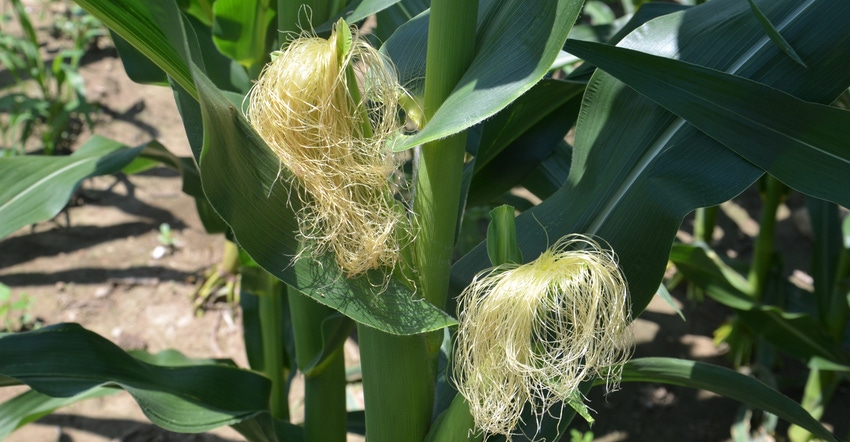July 3, 2019

We’ve talked about potential climate change but didn’t expect it so soon. I hope the very late spring planting season of 2019 isn’t a sign of things to come. However, we must prepare ourselves for the future if we’re going to survive and flourish.
The reality is that most corn in the eastern Corn Belt was planted late. In many cases the soil was almost too moist, but seed had to be planted. We’ll have to address soil compaction problems later.
The Corn Watch ’19 field in central Indiana normally is planted by the last week of April; this year it was planted May 28. We’ll report on its progress all season; read this week’s Corn Watch ’19 article here.
When I first observed the field on June 12, corn plants were in the three-leaf stage. The month of June turned out rather cool and wetter than normal. That may have resulted in slower root development.
Pollination and grain fill
What effects could late planting have on the grain-fill stage for corn after pollination this year? How will yield be affected if it is hotter than usual in August?
First, let’s look at what we know: Corn will need 50 to 60 days for grain fill after pollination to reach physiological maturity, depending on relative maturity of hybrids and prevalent temperatures. During grain fill, corn plants try to pack as much dry matter into kernels as possible.
Corn likes cooler temperatures, and sufficient water and nutrients during this critical period for optimum yields. Stresses during grain fill have a negative effect on yield.
Some things can go wrong during pollination, before you even get to grain fill. If pollination of some ovules isn’t successful due to stress, you may see incomplete kernel set. Japanese beetles and corn rootworm beetles, which feed on pollen in silks, can also interfere with pollination and reduce kernel set. Heat and drought stress could delay silk emergence and cause pollination problems too. Late-emerging silks may not find any pollen left to fertilize ovules and form kernels.
As far as we know, the first silks emerge from the butt of the ear and the last silks from the tip. Kernels near the tip are more likely to be left out of the pollination process if conditions aren’t ideal.
Grain-fill period ahead
If there’s severe heat, lack of moisture or disease stress during grain fill, plants may cannibalize stalks and leaves to fill the needs of their progeny: the kernels. Cooler temperatures and enough moisture will help prevent these conditions from developing.
Toward the end of grain fill, you can determine if black layer has occurred. That may prove especially important this year in some later-planted fields. Crops could be racing against the calendar to mature in time.
Dissect kernels with a pocketknife. When dissected kernel tips start showing a black layer, kernels are mature and no more nutrients can enter. Typically, kernel moisture is 32% to 33% at this stage. When black layer occurs, the grain-fill period is complete.
Nanda is director of genetics for Seed Genetics-Direct, Jeffersonville, Ohio. Email [email protected] or call 317-910-9876.
About the Author(s)
You May Also Like






